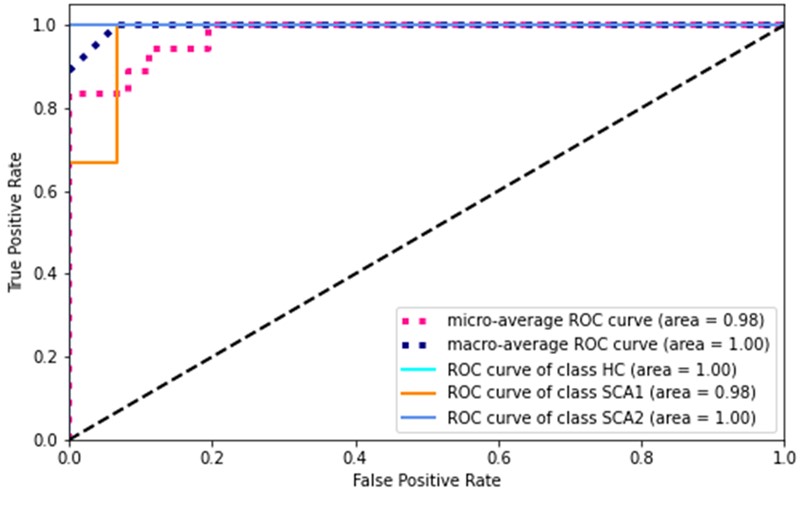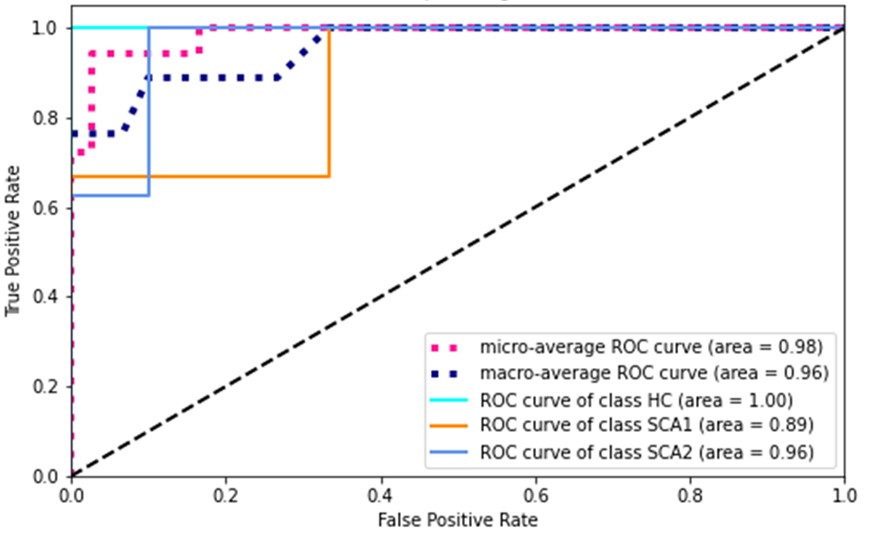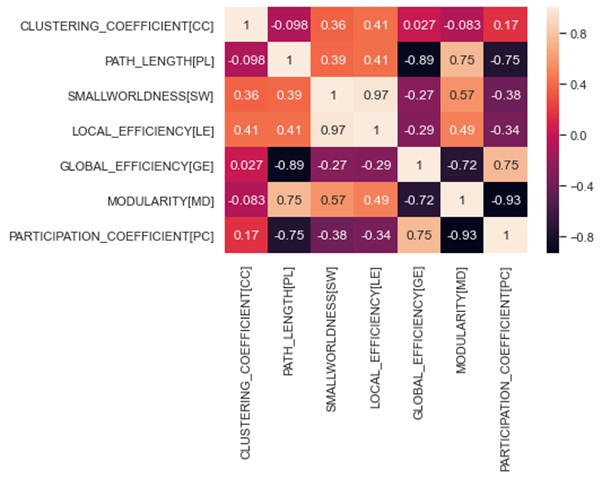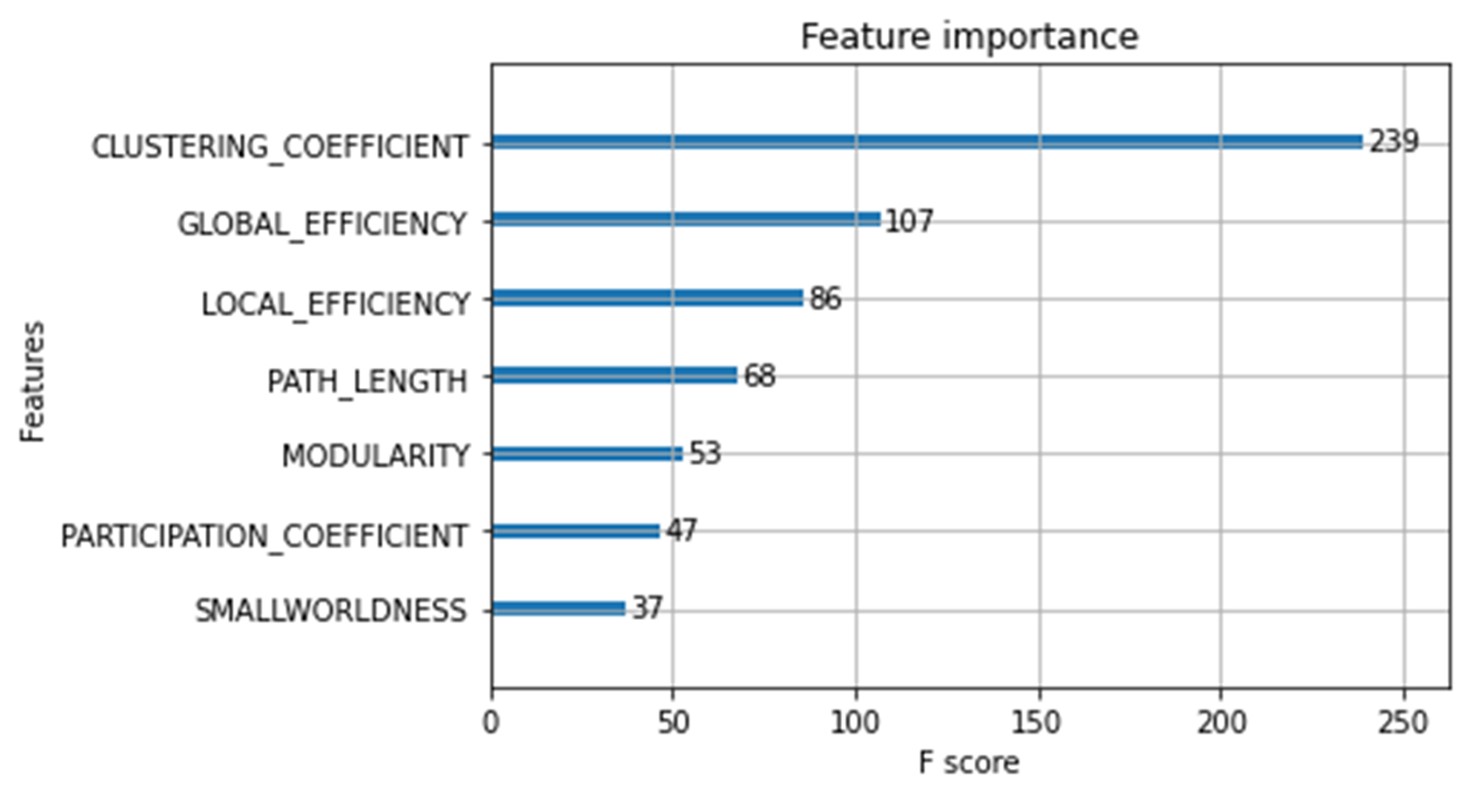Category: Ataxia
Objective: To differentiate genetic variants of spinocerebellar ataxia (SCA1 and SCA2) and healthy controls using machine learning on resting-state functional Magnetic Resonance Imaging graph features.
Background: SCA is a group of hereditary ataxias and is identified by degeneration in the cerebellum and sometimes in the spinal cord. Early differential diagnosis of SCA subtypes is important for both prognosis and decisions related to treatment options.
Method: Resting-state graph measures- Clustering Coefficient (CC), Path Length (PL), Small Worldness (SW), Modularity, Global efficiency (GE), Local efficiency (LE), and Participation Coefficients (PC) were calculated using Brain Connectivity Toolbox (BCT). Subject demographics are provided in table1. Data were split into training and testing datasets, training data was subjected to some exploratory data analysis (feature correlation, feature ranking) and the selected features were subsequently fed to supervised machine learning (ML) algorithms for 3-fold cross-validation. Promising algorithms were subjected to hyperparameter tuning and used for final training and performance was assessed on the test dataset. All ML classification was performed using scikit-learn library in python.
Results: Support Vector Classifier (SVC) and adaboost models were able to perform multiclass classification with a micro average ROC AUC score of 0.98 (figure1, figure2). The classification report of each class for SVC and adaboost is provided in table2 and table3 respectively. A heatmap depicting the correlation between features is shown in figure3. CC and GE carried the highest feature importance for classification (figure4).
Conclusion: Adaboost and SVC models performed well in discriminating between healthy controls, SCA1 and SCA2 subjects using resting-state features with f1 scores of 0.94 and 0.96. both classifiers were least sensitive towards the SCA1 class. Resting-state graph measures can be effectively used to predict the SCA subtypes (SCA1, SCA2).
References: https://scikit-learn.org/
https://sites.google.com/site/bctnet/
To cite this abstract in AMA style:
A. Indoria, S. Bhardwaj, AS. Sunny, S. Hegde, N. Kamble, J. Saini, R. Yadav, PK. Pal, RD. Bharath. Machine learning-based classification of SCA1, SCA2, and Healthy controls using graph features [abstract]. Mov Disord. 2022; 37 (suppl 2). https://www.mdsabstracts.org/abstract/machine-learning-based-classification-of-sca1-sca2-and-healthy-controls-using-graph-features/. Accessed December 20, 2025.« Back to 2022 International Congress
MDS Abstracts - https://www.mdsabstracts.org/abstract/machine-learning-based-classification-of-sca1-sca2-and-healthy-controls-using-graph-features/




